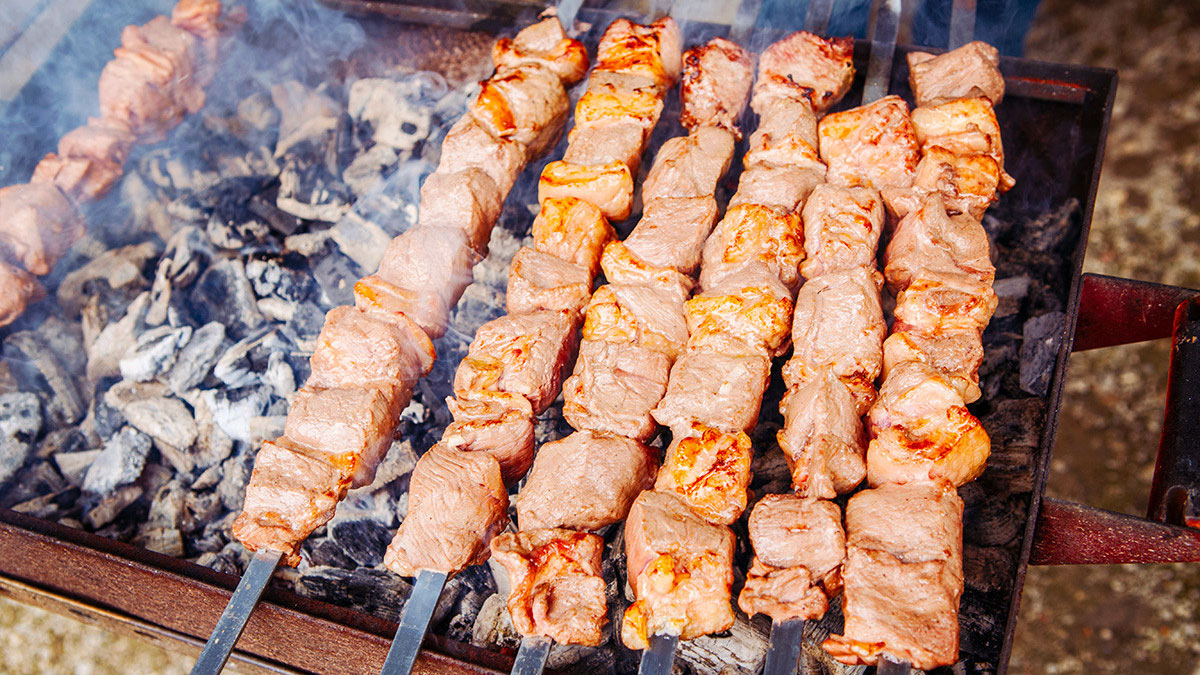
Soviet Chess Cake - checkmate at any tea party (RECIPE)
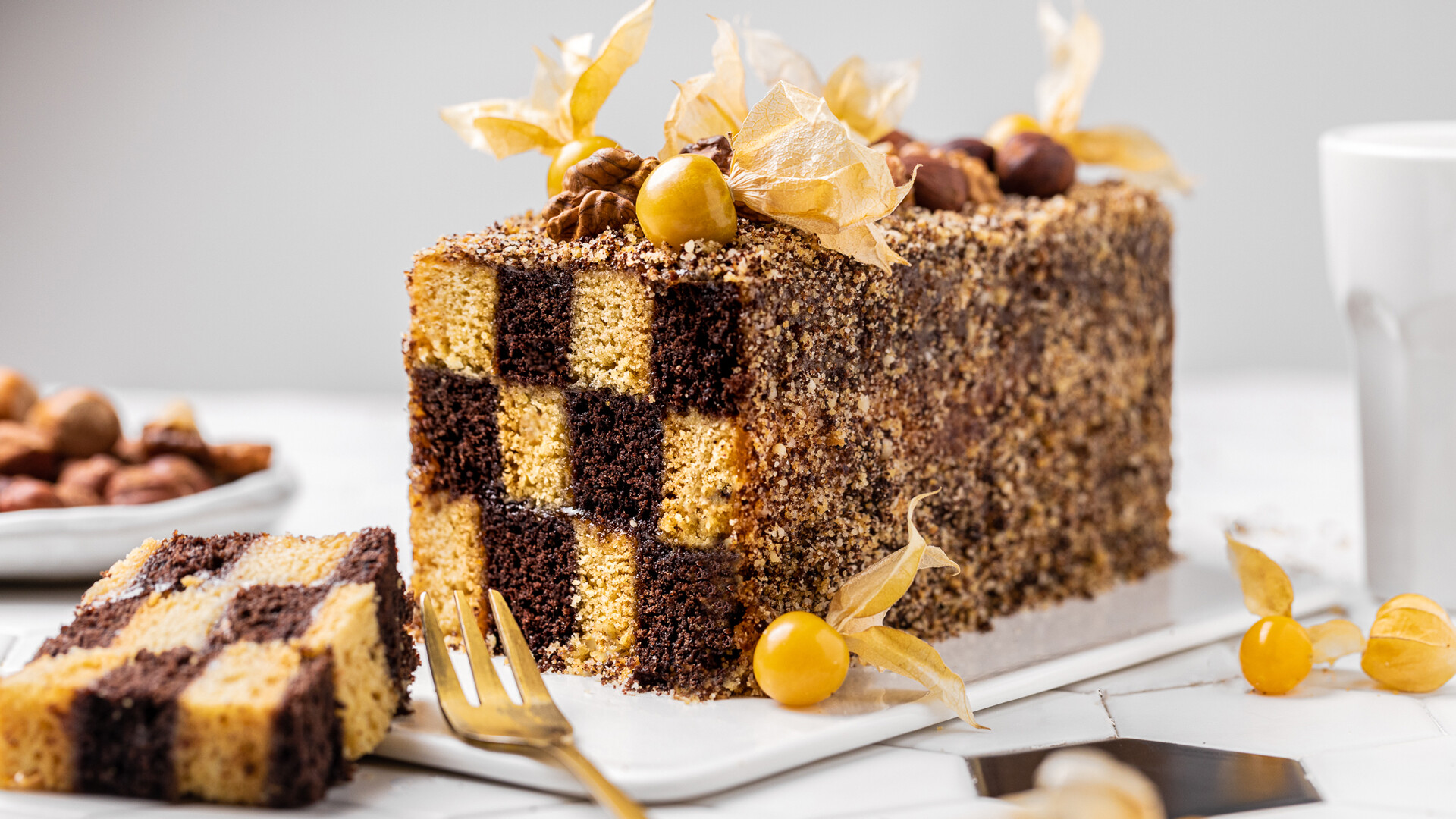
In Soviet times the game of chess became very popular. The country was proud of the victories of its compatriots in international tournaments, while back at home adults played in parks and children eagerly joined chess clubs. During the period of peak chess popularity in the 1960s the delicious Chess Cake was born and became widely appreciated.
The Chess Cake originally was a rectangular bar with a spectacular cut in a chessboard pattern. You could buy it in bakeries and supermarkets. But housewives also tried to make it themselves. Eventually, it disappeared from shops. Today, it’s hard to find, which is why it's so important that the recipe and cooking techniques have been safely preserved and now we can make it at home.
Although the dessert looks complicated, it’s quite simple to make. The base is made up of crumbly cake layers. The classic method is to glaze them with apple jam. But it can be substituted for any sour-tasting jam. I chose apricot jam, which is quite soft and neutral in flavour. The cake comes out dense but fluffy. The sweetness of the vanilla and chocolate cakes is offset by the fruity filling.
There are several variations of Chess Cake. Sometimes it’s spread with boiled condensed milk or curd and vanilla cream. A classic variation is sprinkled with crumbled cakes and nuts. Occasionally, chocolate frosting is applied to the cake. Some people even make marzipan chess figurines to decorate it.
I opted for a seasonal autumnal decoration of nuts, which I used for sprinkles, and physalis from my garden.
Ingredients for 12 servings (2 cakes):
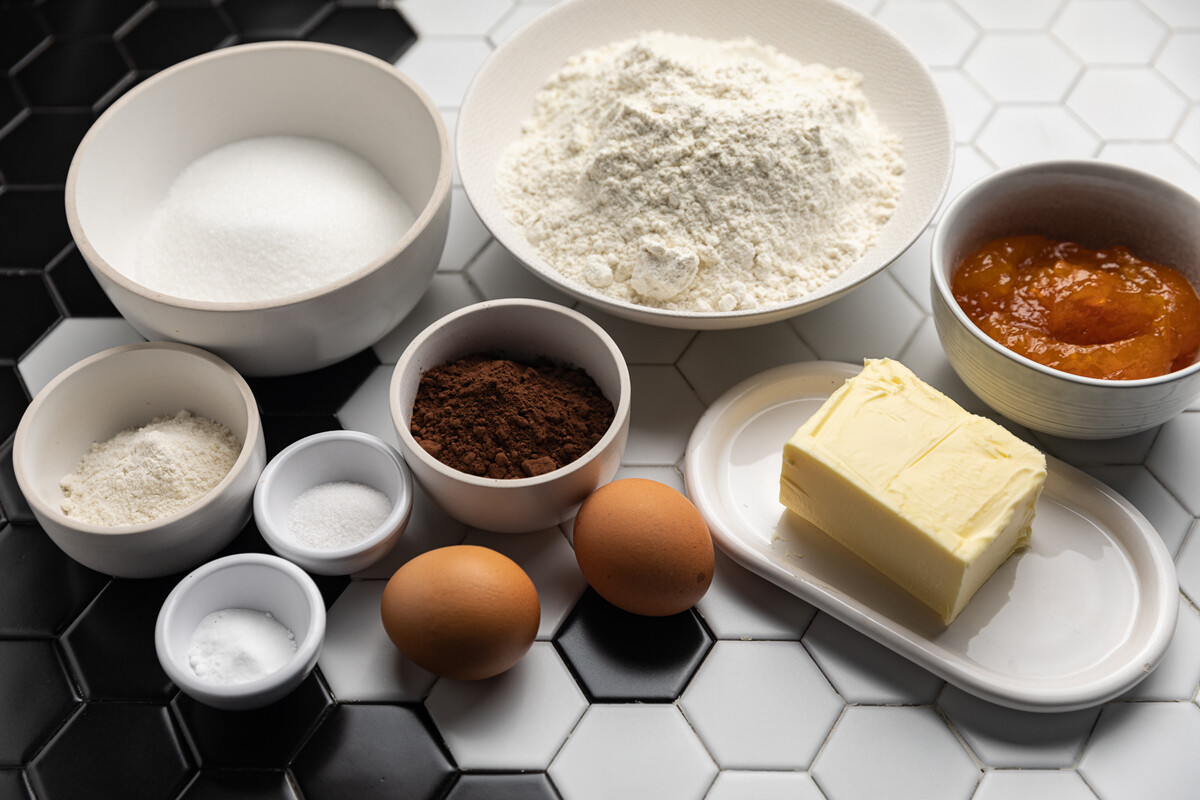
- Flour - 375 g + 25 g for vanilla layer
- Sugar - 200 g
- Butter - 200 g
- Eggs - 2 units
- Cocoa - 25 g
- Vanilla sugar - 1 tsp
- Baking powder - 10 g
- Salt - 1/3 tsp
- Apricot jam - 400 g
Preparation:
1. All ingredients should be at room temperature. Beat butter with sugar and vanilla sugar for five minutes. The mass should increase in volume and lighten.
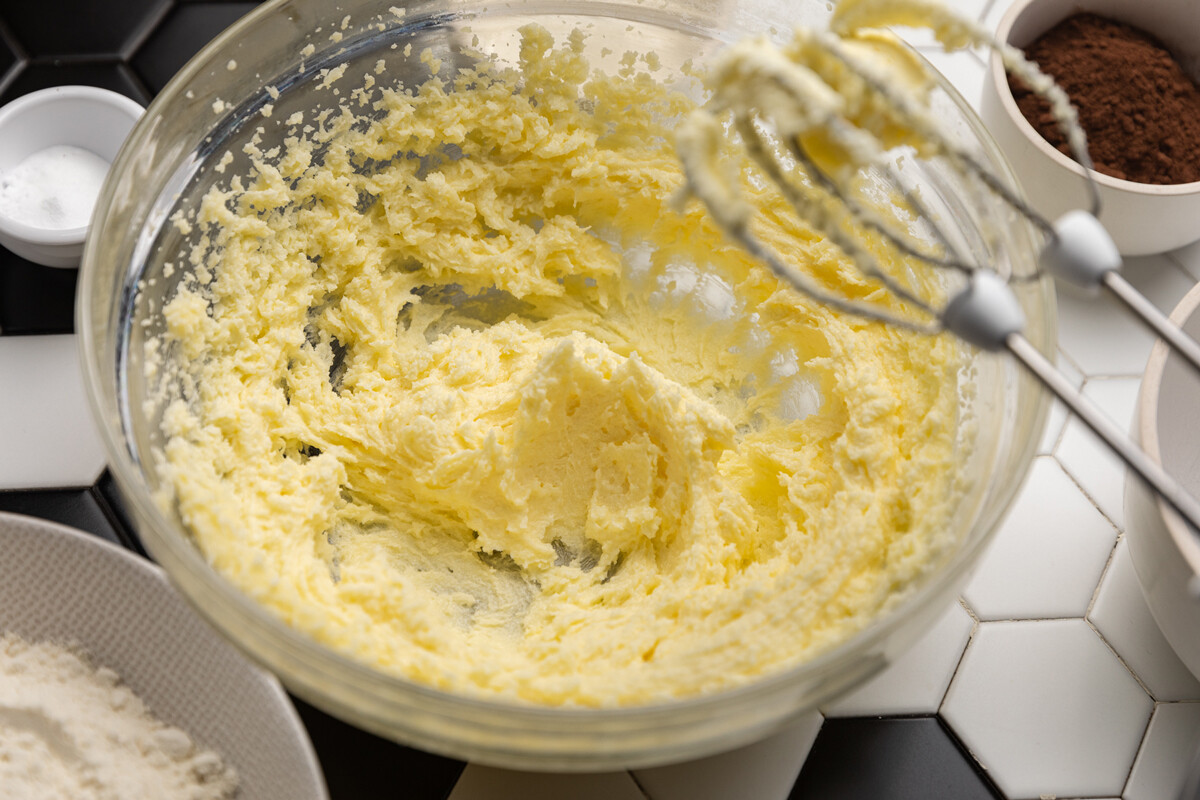
2. Add eggs one at a time. Stir the mixture well.
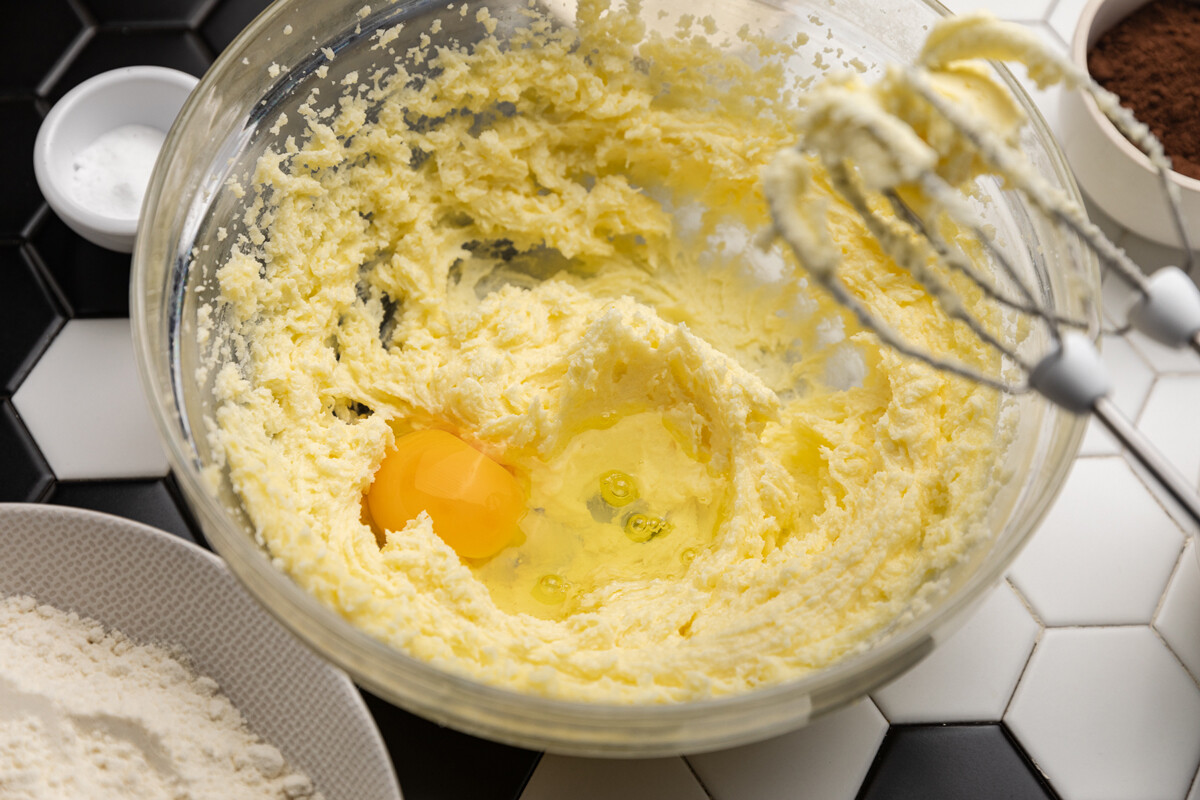
3. Add flour with baking powder and salt, and mix until you get a smooth consistency.
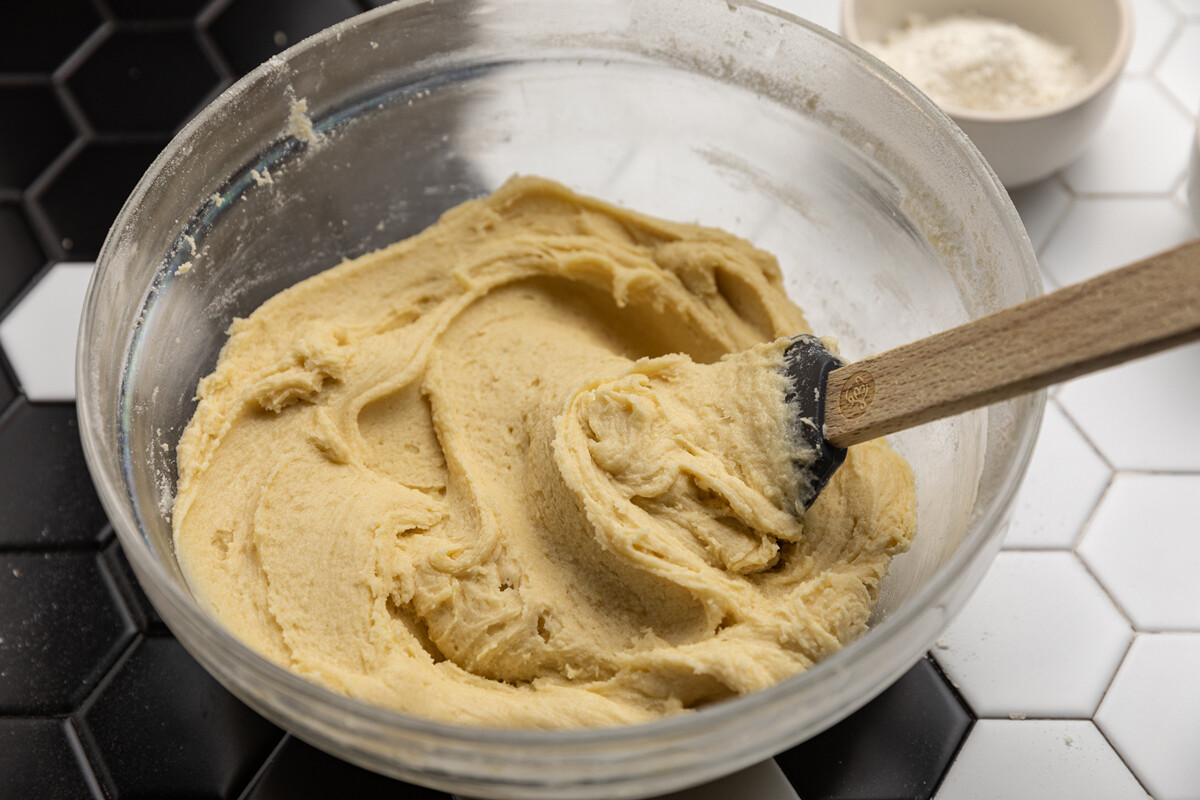
4. Divide the dough into two equal parts. Add 25 g of flour to one part and mix well. Add 25 g of cocoa powder to the other half.
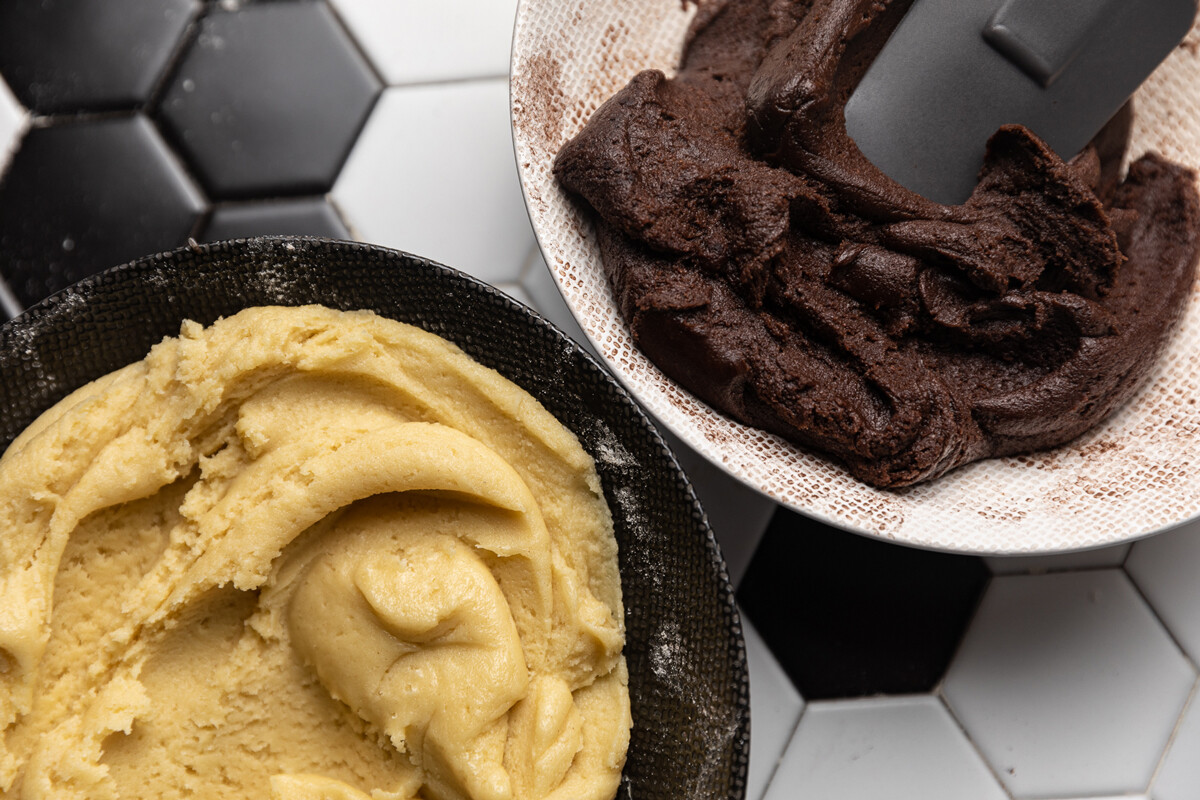
5. This is enough batter for one baking tray. I divided the tray into two parts with baking paper so that I could make two crusts at a time. Flatten the pastry and bake for 20 minutes in a preheated oven at 180°C.
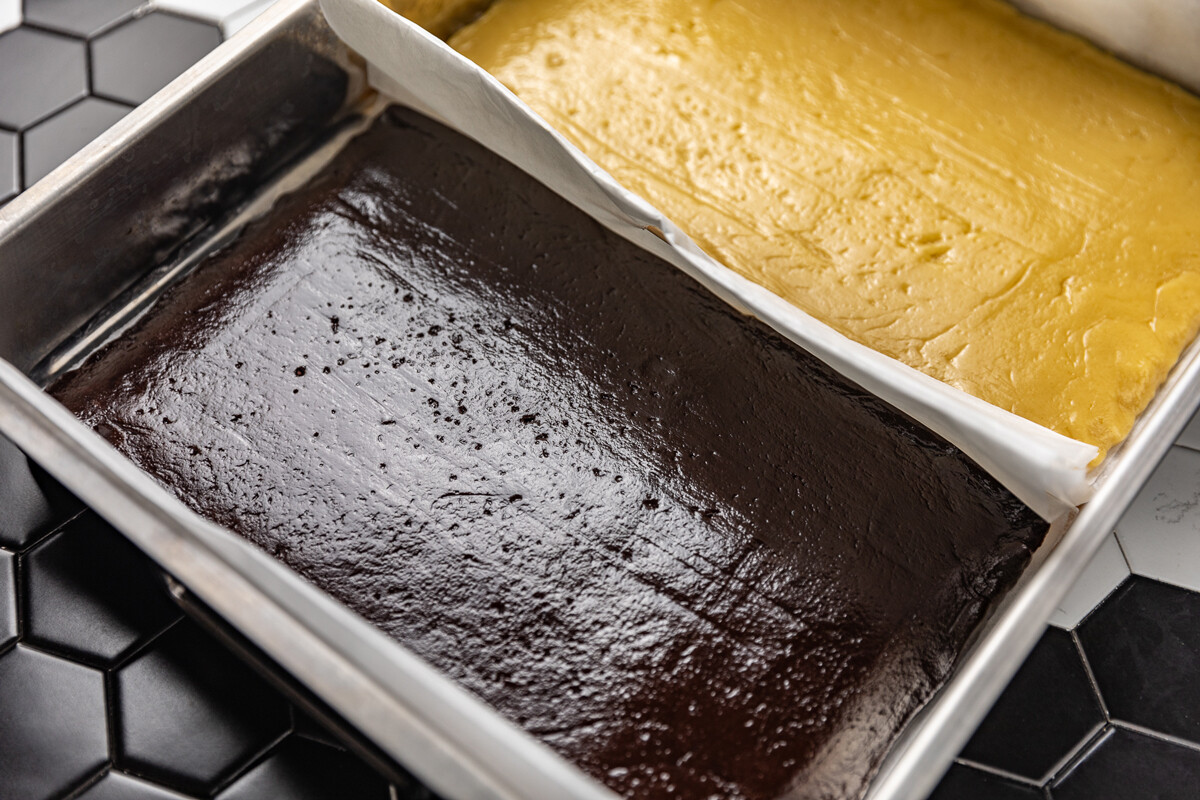
6. Let the cakes cool.
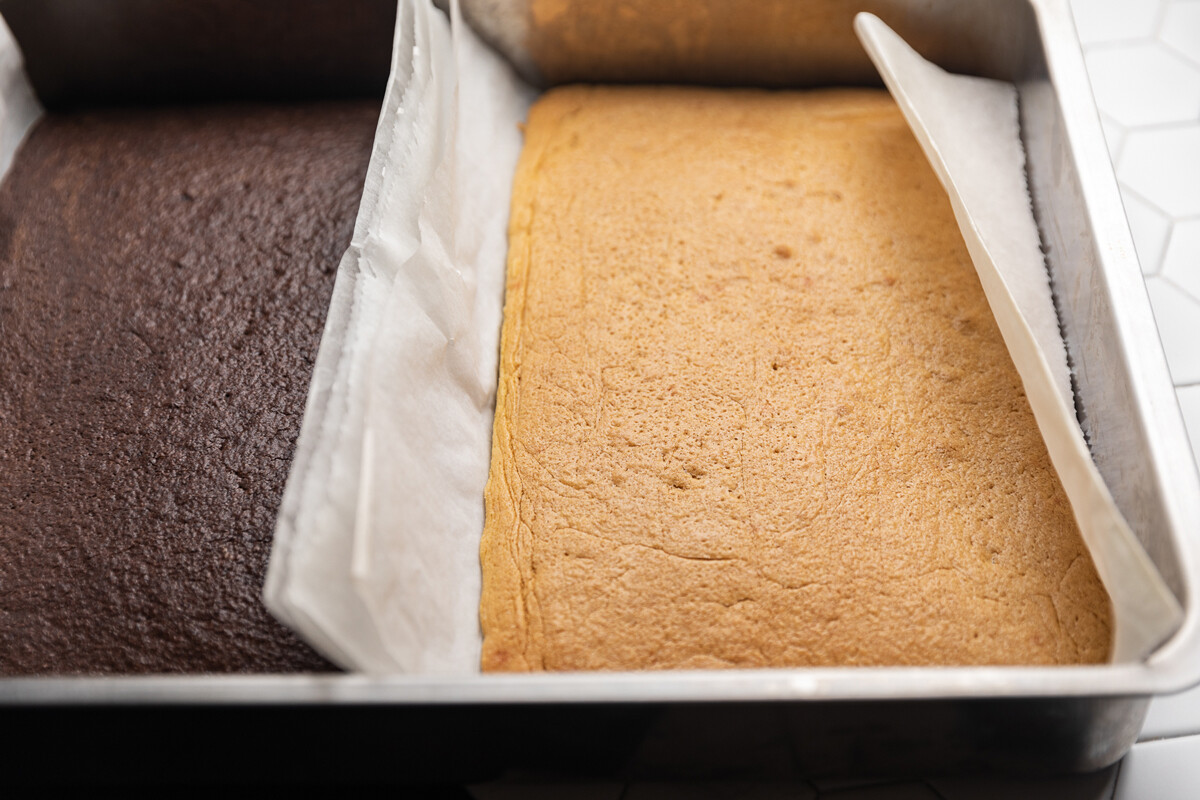
7. Brush one cake with jam and cover it with the other.

8. Cut it open, brush the top of the first double half and cover with the second half.
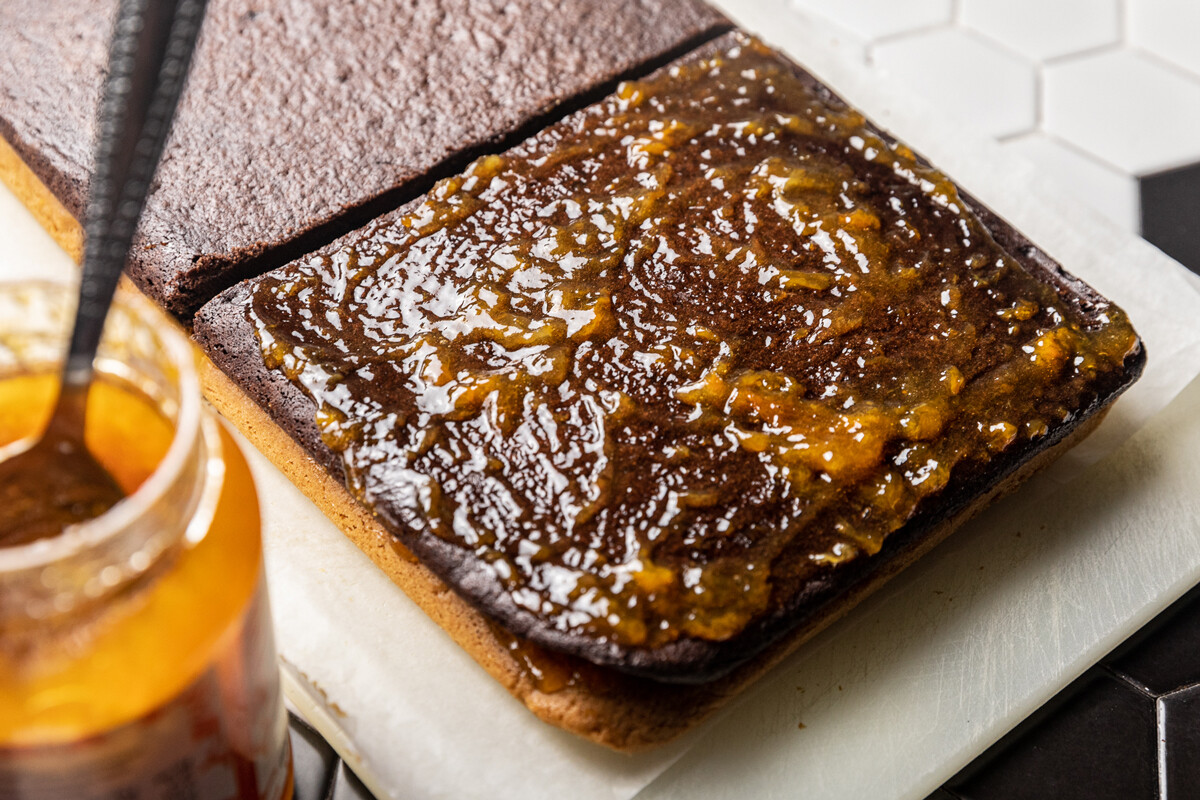
9. Place a press on top and leave for 4 hours to allow the four layers to stick together.
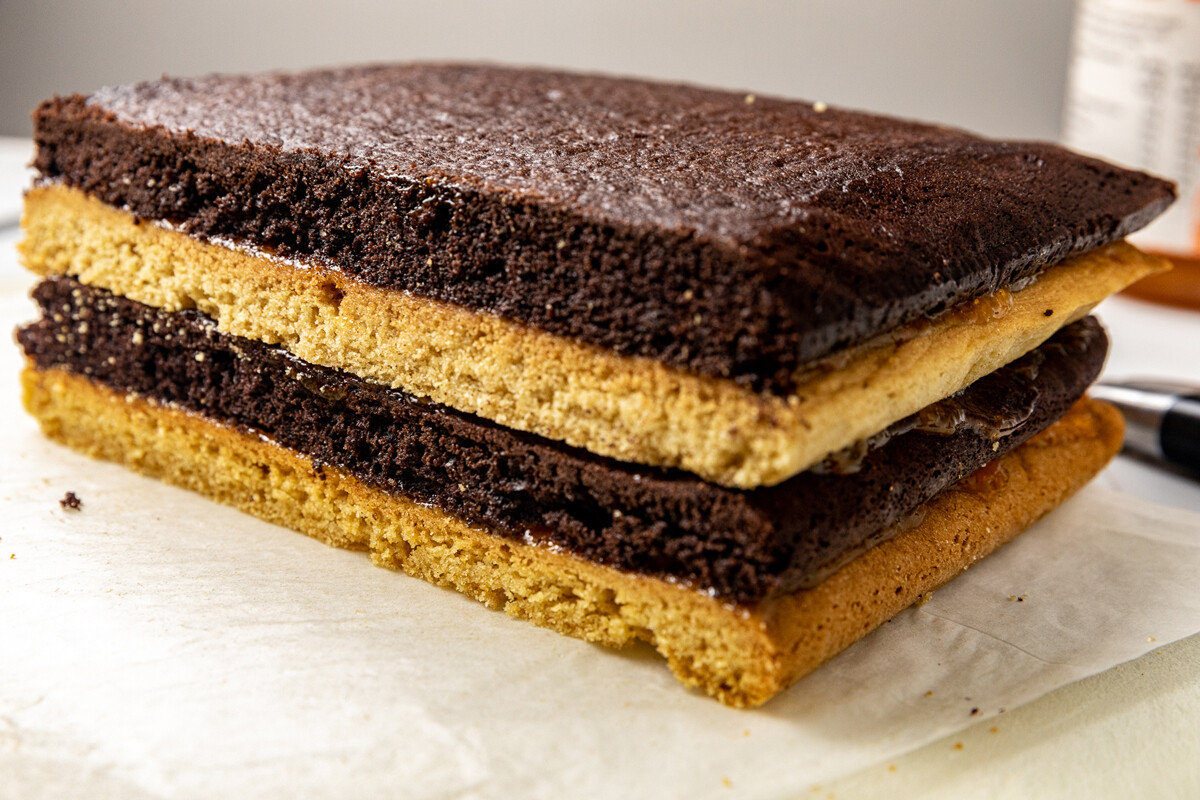
10. Cut the 4 joined cakes into equal strips. I used a ruler and measured out 2 cm strips.
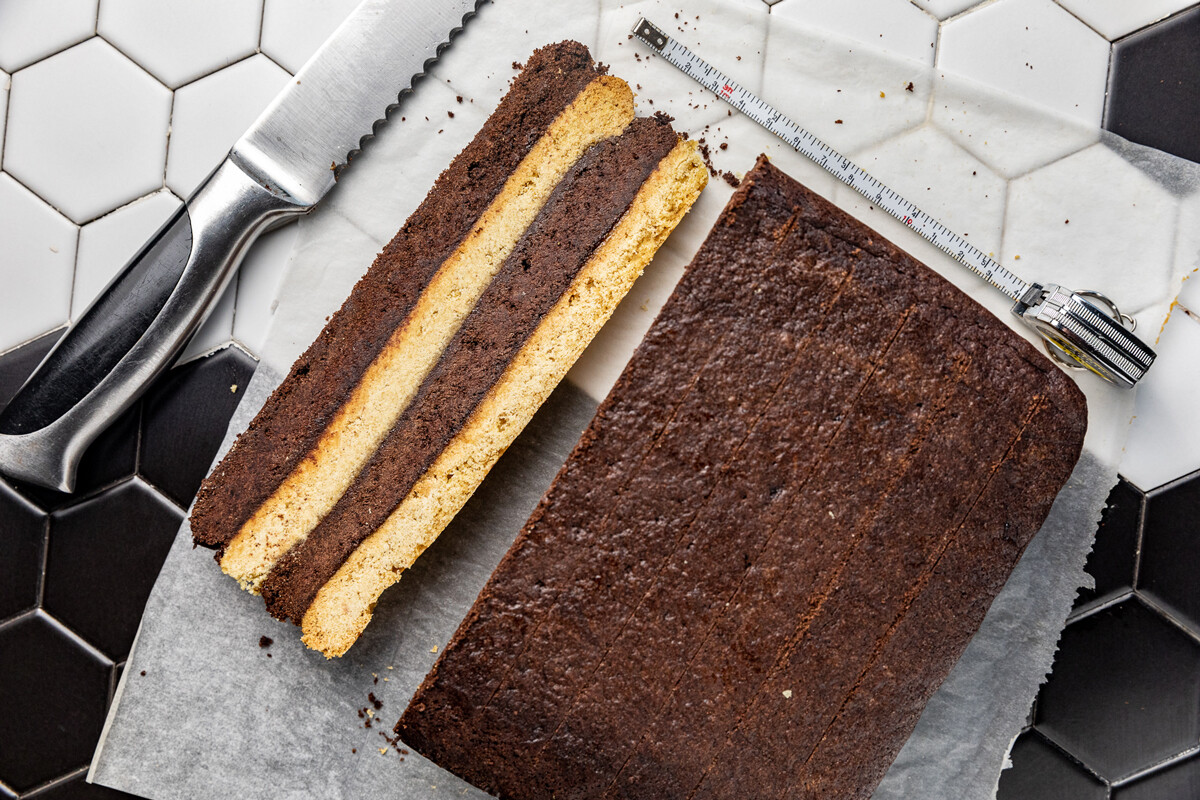
11. Turn the strips over in a staggered pattern, spreading the jam over them.
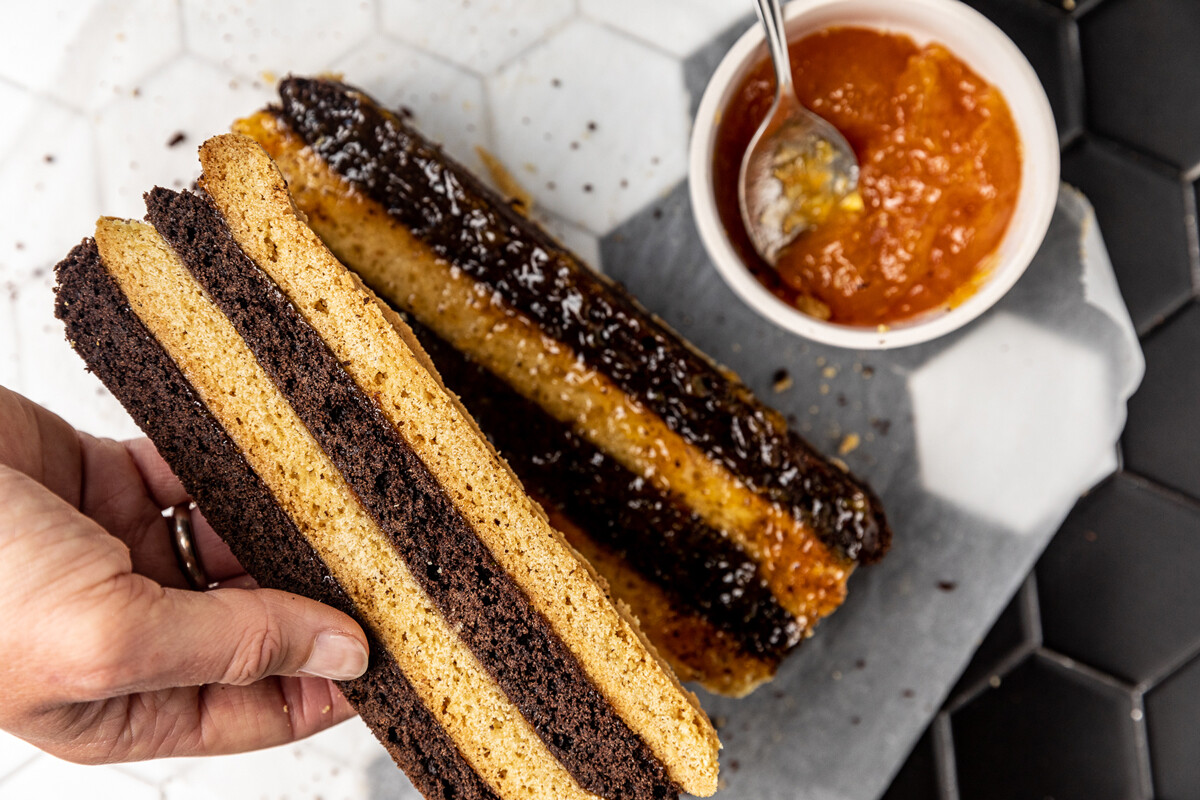
12. Brush the edges with jam.
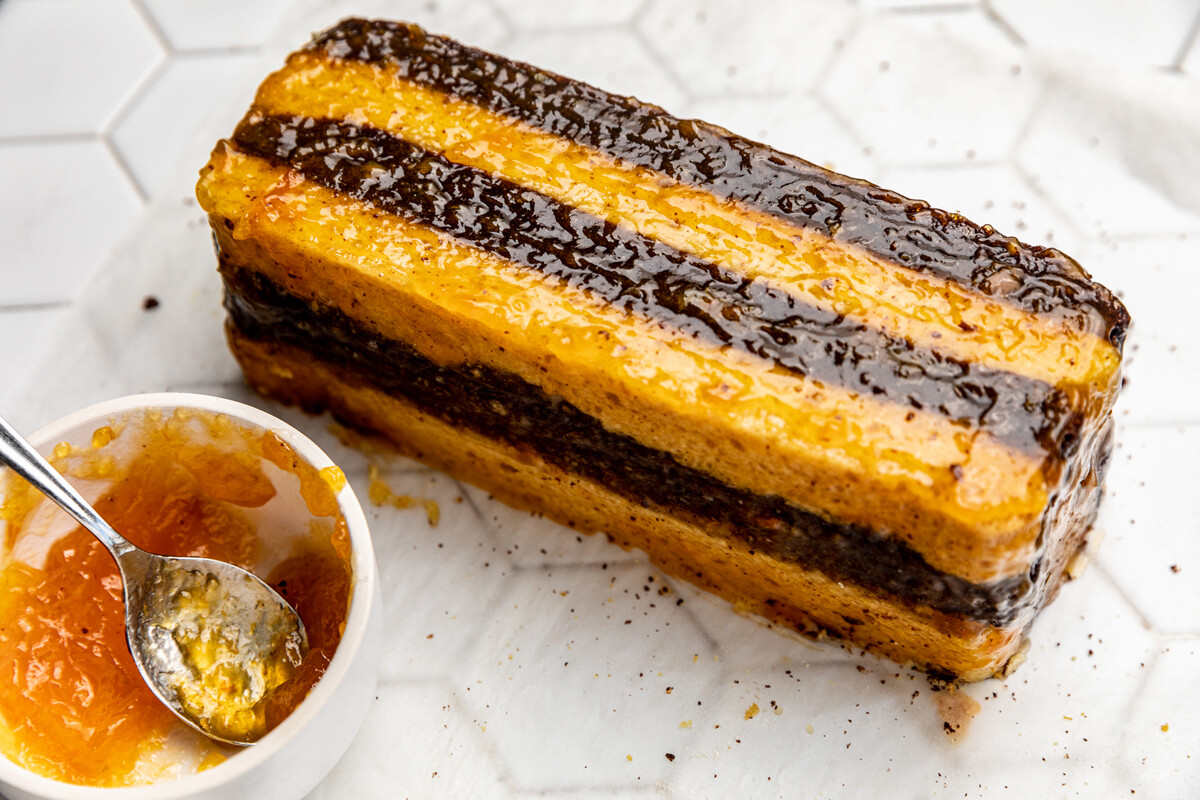
13. Shred the rest of the edges of the cakes and start sprinkling. I also added walnuts and hazelnuts.
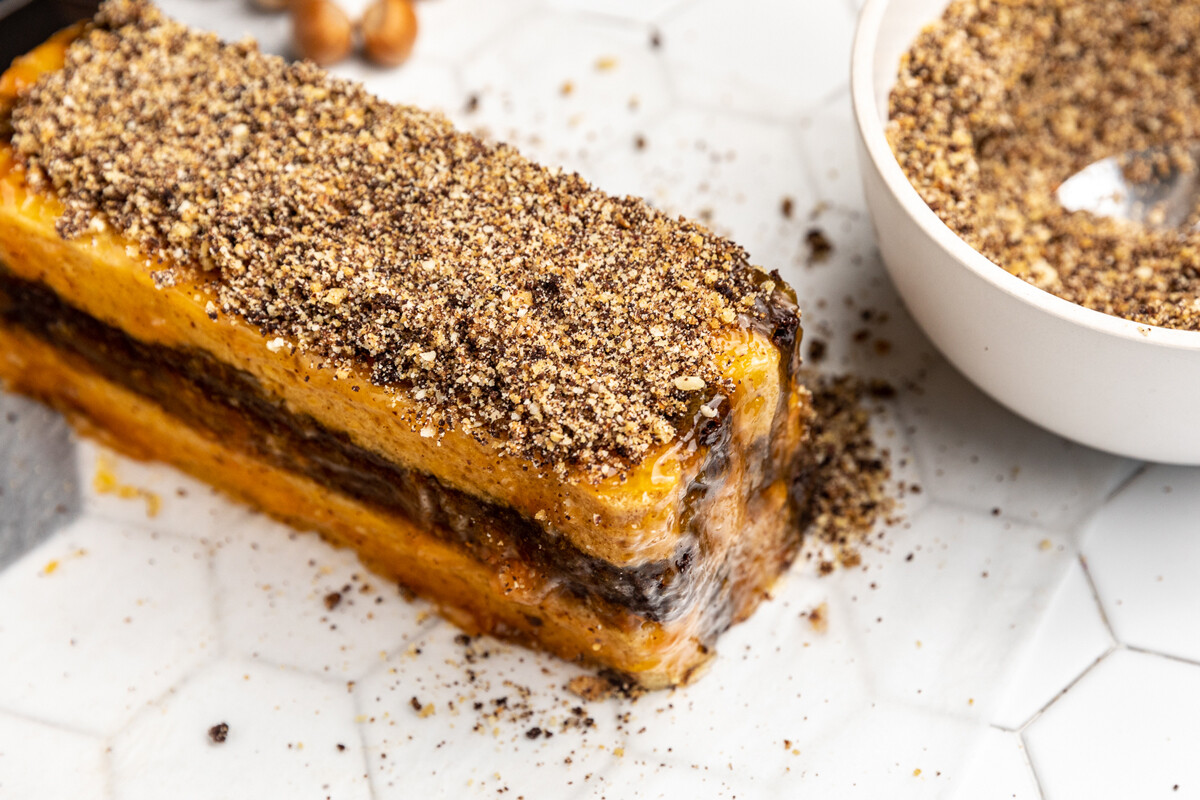
14. Sprinkle the cake on all sides, garnish with the nuts and leave in the fridge for another 4 hours.
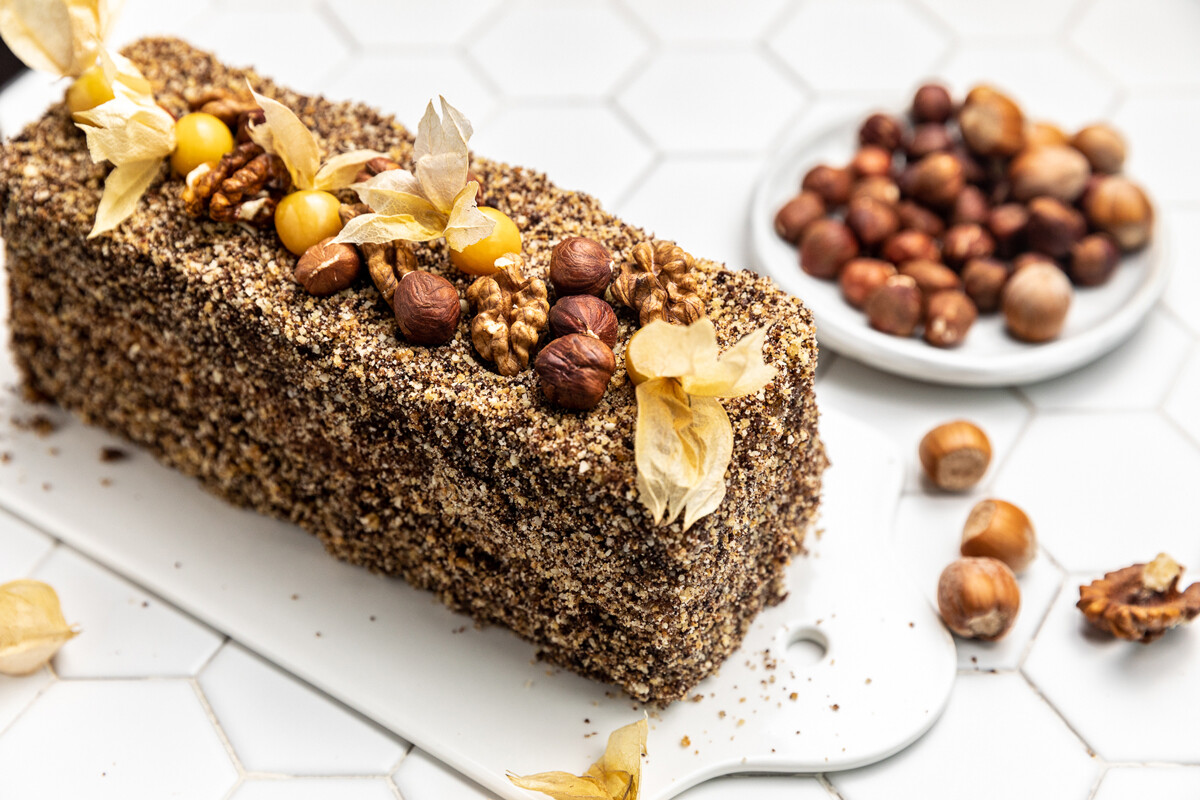
15. Serve with tea or coffee. Enjoy!
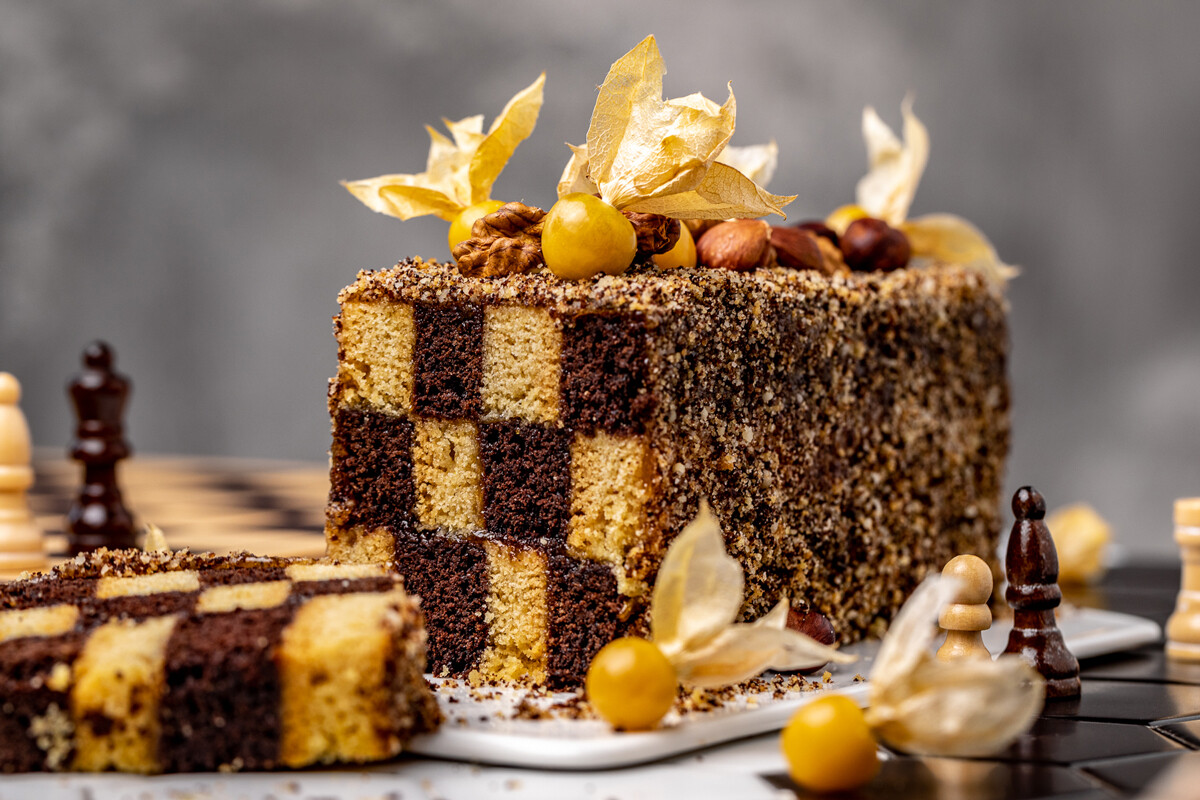
READ MORE: Night cake: Favorite recipe of Russian babushkas (RECIPE)












